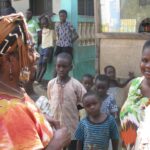Seed Experiment with Slightly Stoopid May 22, 2010. Honolulu, Hawai’i:
Much thanks to the Groundation (May 21, 2010) and Slightly Stoopid crowds at Pipeline Cafe for participating in the 1st Surfing Medicine International Charity Seed Experiment. For those of you that have questions about the Native Hawaiian seeds we handed out to you (Styphelia tameiameiae and Dodonaea viscosa), we hope you reach out to us. The long term goal is to have bands around the World unite with their fans to track and assist with the progress of growth of important medicinal plants cultivated from seeds handed out to crowds at concerts. Below are some uses and growing techniques for restoration of the two species of plants we handed out to you:
Seed #1:
Scientific name: Dodonaea viscosa
Common name: ‘A’ali’i (Indigenous to the Hawaiian Islands)
Uses: The ‘A’ali’i produce dense golden-brown hardwood used for timber, weapons, and tools. The attractive capsules were used in lei making and also to make a red dye (Lilleeng-Rosenberger, 2005). The leaf of Dodonaea viscosa is used in Madagascar for fever and sore throat (Githens, 1949).
To Plant: Soak seeds in hand-hot or tap water for 24 hours. Surface sow seeds in well-drained soil. Keep moist, and water every other day or when dry. Germinates in 2 weeks to 6 months. Protect from heavy rain. Outplant in 6 months to 1 year (Lilleng-Rosenberger, 2005).
Email questions and/or results to: surfingmedicine@gmail.com
Seed #2:
Scientific name: Styphelia tameiameiae
Common name: Pukiawe, ‘a’ali’i mahu, pukeawe, puakeawe (Indigenous to the Hawaiian Islands)
Uses: Hawaiians used the bright red fruit and leaves in leis (Abbott, 1992), and the wood was used in the cremation of outlaws (Lilleng-Rosenberger, 2005). When a high-ranking chief wanted to mingle with commoners, he would enter a smoke house and be smudged with smoke of pukiawe wood while a priest chanted a prayer for dispensation (Wagner et al., 1990).
Habitat: Styphelia tameiameiae is an exceedingly variable species that occurs across a broad spectrum of habitat types occurring in open, relatively dry to wet or boggy areas on Kaua’i, O’ahu, Lana’i, Maui, and Hawai’i (Wagner et al., 1990).
To Plant: Surface sow seeds in well-drained soil. Water every other day or when dry. Germinates in 3-6 months. Outplant when 4-5″ tall (could take years).
Email questions and/or results to: surfingmedicine@gmail.com.
REFERENCES:
Abbott, Isabella Aiona (1992) La’au Hawai’i: Traditional Hawaiian Uses of Plants. Bishop Museum Press, Honolulu, HI.
Githens, Thomas S., M.D. (1949) Drug Plants of Africa. University of Pennsylvania Press, The University Museum, Philadelphia, PA.
Rosenberger-Lilleeng, Kerin E (2005) Growing Hawai’i’s Native Plants: A Simple Step-by-Step Approach for Every Species.
Wagner, W.L., Herbst, D.R., Sohmer, S.H. (1990) Manual of the Flowering Plants of Hawai’i: Volume I. Bishop Museum Press, Honolulu, HI.



